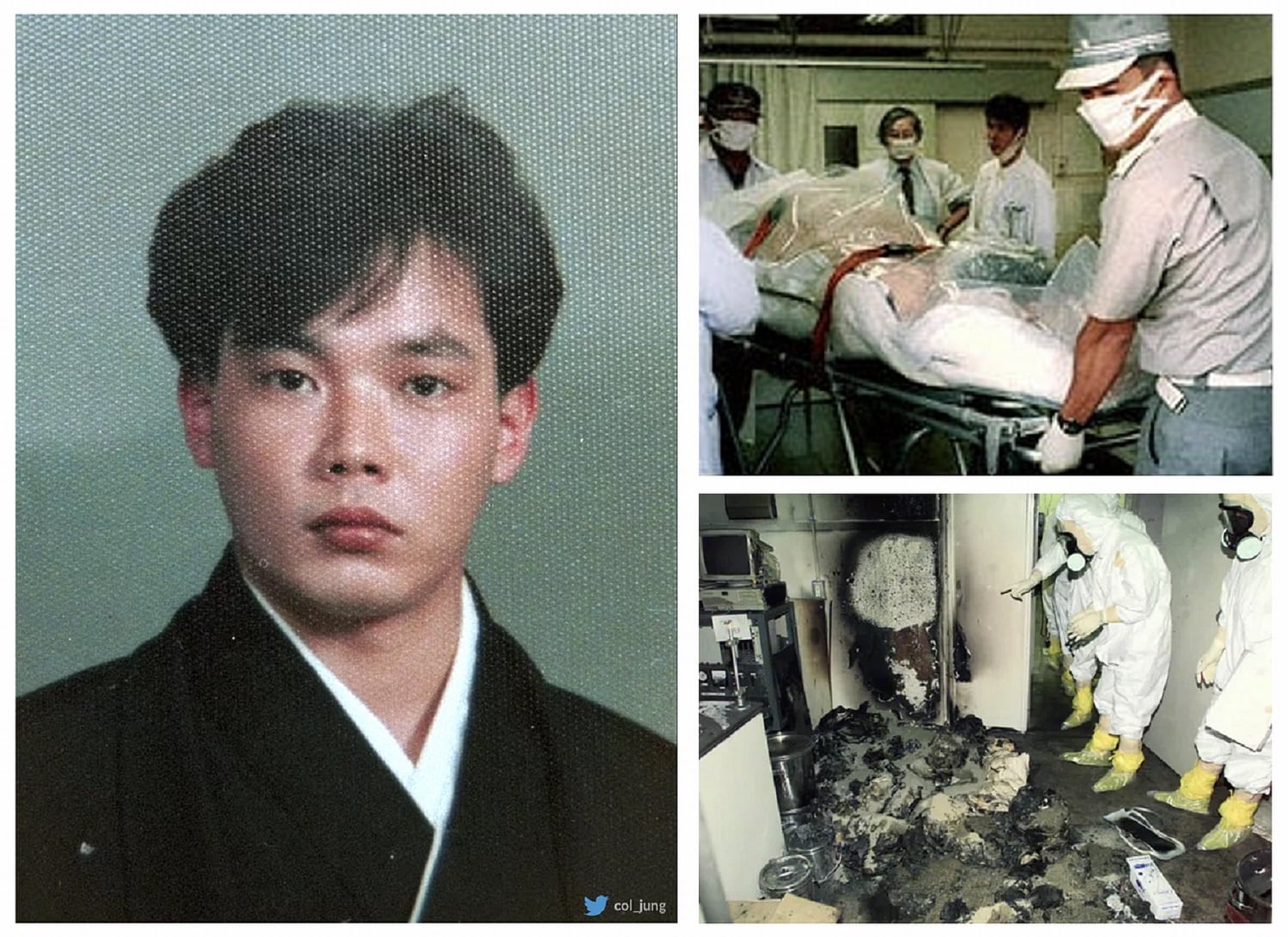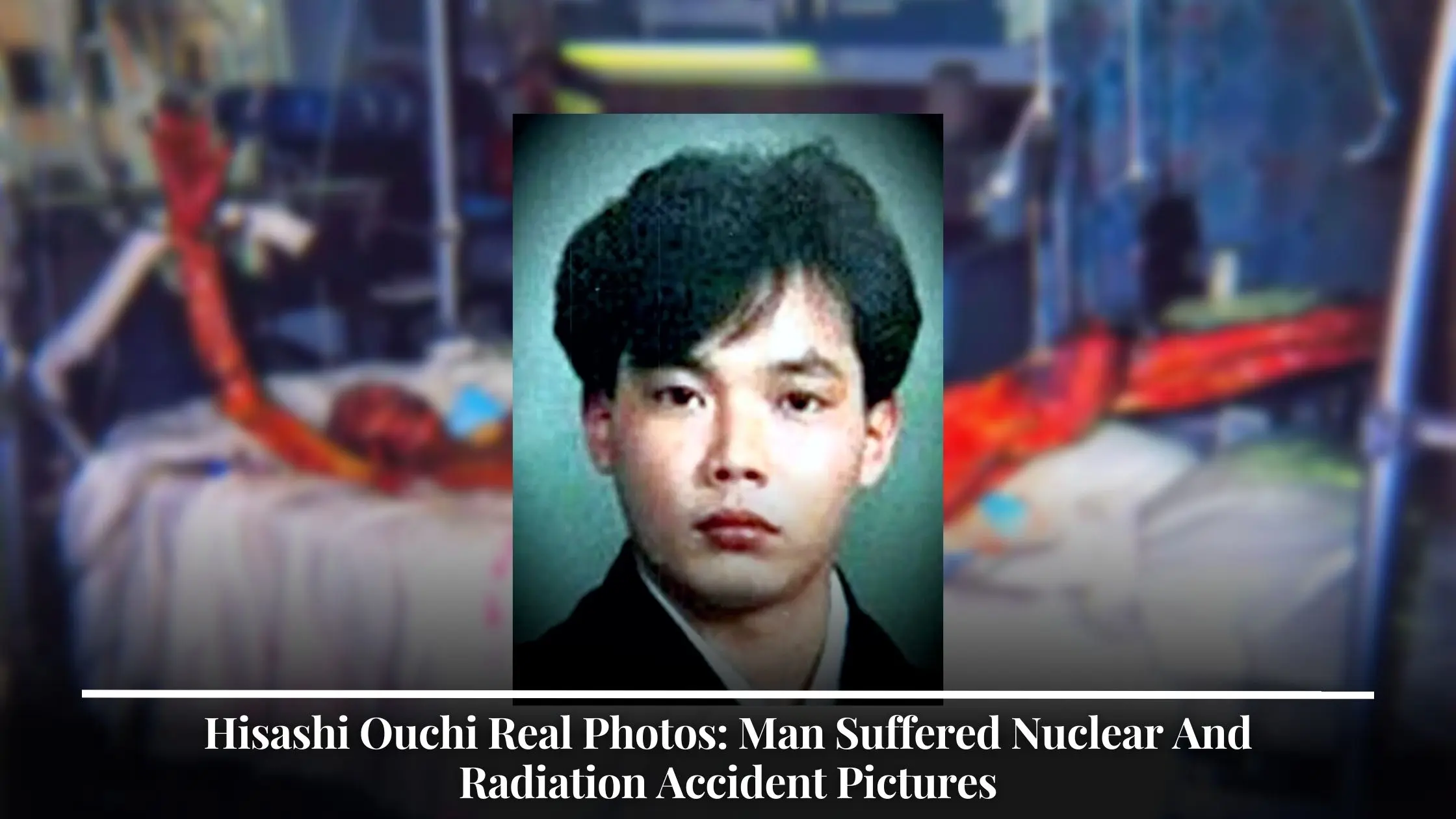Hisashi Ouchi - A Story Of Unthinkable Anguish
Sometimes, events unfold that truly shake us, reminding everyone of the delicate balance between human progress and the potential for great sadness. The story of Hisashi Ouchi is, in a way, one such event, a stark reminder of what can happen when things go terribly wrong in an industry that requires the utmost care. It tells of a nuclear incident in Japan that left a lasting impression on safety standards and medical ethics, changing how many people view such situations.
This particular incident, which took place at a uranium processing plant, was one of the most severe nuclear accidents Japan had ever seen, prompting a wide reevaluation of how things were done to keep people safe. It’s a narrative that, in some respects, speaks to the incredible strength of the human spirit in the face of unimaginable suffering, yet also highlights the profound responsibility that comes with handling powerful forces.
What happened to Hisashi Ouchi became a case study, a very public display of the terrible effects radiation can have on a person's body. His experience, and the efforts made to help him, brought up many difficult questions about life, death, and what it means to offer care when there seems to be little hope. His name, in a way, is now connected to these very important discussions, leaving a significant mark on the history of nuclear safety and medical practice.
Table of Contents
- Who Was Hisashi Ouchi? A Glimpse into His Life
- The Day Everything Changed for Hisashi Ouchi
- What Happened to Hisashi Ouchi After the Accident?
- The Fight for Life and the Ethical Questions Around Hisashi Ouchi
- How Did Hisashi Ouchi Suffer So Much?
- The Lasting Pictures of Hisashi Ouchi
- What Did We Learn from Hisashi Ouchi's Story?
- Remembering Hisashi Ouchi
Who Was Hisashi Ouchi? A Glimpse into His Life
Hisashi Ouchi was, in essence, a technician, a person who worked with his hands and skills at the JCO facility. He was, like so many others, just doing his job, contributing to a process that involved handling materials for nuclear fuel. His work, along with that of his colleagues, Masato Shinohara and Yutaka Yokokawa, was about getting things done, meeting requirements for shipping. On that fateful day, they were, in fact, trying to speed up the final stages of a fuel conversion process, perhaps feeling the pressure to finish on time. This was, you know, a very typical workday for them, until it suddenly wasn't.
Before the accident, Hisashi Ouchi was, by all accounts, a regular person with a life, perhaps a family, and daily routines. He was someone who had chosen a career in a specialized field, a field that, while offering certain benefits, also carried inherent risks. His role as a technician meant he was directly involved in the practical aspects of the plant's operations, handling the very substances that would later cause him such profound harm. His life, in a way, was quite ordinary until it became a public, extraordinary example of suffering.
The details of his personal life, beyond his professional role, are not widely known, which is, in some respects, common for individuals caught in such large-scale events. What we do know is that he was a human being, with a body that, like anyone else's, was not built to withstand the immense forces it encountered. His story, therefore, becomes less about who he was as an individual before the accident, and more about the universal human experience of pain and resilience in the face of an unthinkable event, too it's almost a universal tale of vulnerability.
Personal Details of Hisashi Ouchi
| Name | Hisashi Ouchi |
| Occupation | Nuclear Technician at JCO facility |
| Date of Accident | September 30, 1999 |
| Location of Accident | Tokaimura, Japan |
| Cause of Death | Acute Radiation Syndrome (due to criticality accident) |
| Date of Death | December 21, 1999 |
| Days Lived After Accident | 83 days |
The Day Everything Changed for Hisashi Ouchi
On September 30, 1999, at around 10:35 in the morning, Hisashi Ouchi was, you know, just working with a colleague at the Japanese nuclear plant in Tokaimura. They were, it seems, involved in pouring enriched uranium powder, a routine task that, on this particular day, went horribly wrong. This wasn't some grand, complex failure of a reactor core; it was, rather, a seemingly simple misstep in a processing plant, a moment where human error intersected with incredibly dangerous materials.
The situation that unfolded was what is known as a nuclear criticality event. This happens when enough fissile material, like uranium, comes together in a way that allows a self-sustaining chain reaction to begin. In this case, the workers were using buckets to mix uranium solution, a method that was not, in fact, approved for the process. This deviation from proper procedure, perhaps in an effort to save time or effort, had dire consequences. It was, basically, a moment where the invisible forces of the atomic world were unleashed in a way no one intended.
Forty-nine people in total were exposed to radiation as a result of this incident, which became known as Japan's worst nuclear accident at a uranium processing plant. Two of those individuals, Hisashi Ouchi and Masato Shinohara, received what was, unfortunately, a potentially lethal amount of radiation. The event was not only devastating for those directly involved but also sent shockwaves through the community and the wider world, raising serious questions about how safety was being managed in such facilities. It was, honestly, a very stark lesson for everyone.
What Happened to Hisashi Ouchi After the Accident?
Immediately following the accident, Hisashi Ouchi was exposed to an immense amount of radiation, a dose so large that it, in effect, destroyed all his chromosomes and wiped out his white blood cells. This level of exposure meant his body's ability to heal itself, to fight off infection, was completely gone. He was, of course, rushed to the hospital right away, but the damage was already done, and it was, sadly, too late to reverse the initial impact. His story, unfortunately, did not end there; it was just the beginning of a prolonged and incredibly difficult struggle.
The very next day, the physical signs of the radiation poisoning began to show themselves with terrifying speed. Hisashi Ouchi’s hands, which had been directly exposed, became covered with a rash. This rash, almost immediately, began to develop into huge, painful blisters from which blood and lymph continuously oozed. It was, basically, a visual representation of the internal destruction happening within his body. The pain he must have experienced, even in those early hours, would have been, you know, truly unimaginable.
As the days turned into weeks, Hisashi Ouchi's condition grew steadily worse. His skin, the body's largest organ and first line of defense, continued to deteriorate, making him incredibly vulnerable to infection. His internal organs were also, in a way, failing, and he suffered from a wide range of severe symptoms that defied conventional medical treatment. The doctors and medical staff began, very quickly, to fight for his life, and the lives of the other victims, in what became a desperate and unprecedented effort to understand and combat the effects of such extreme radiation exposure. It was, honestly, a very difficult situation for everyone involved.
The Fight for Life and the Ethical Questions Around Hisashi Ouchi
From the moment Hisashi Ouchi was admitted to the hospital, a team of doctors and medical experts began an intense effort to keep him alive. They were, in essence, fighting a battle against an invisible enemy that had already ravaged his body at a cellular level. He received numerous blood transfusions, skin grafts, and other interventions, all aimed at supporting his failing systems and trying to give his body a chance to recover. It was, in fact, a constant struggle, with new problems appearing almost daily, and the medical team working tirelessly, you know, around the clock.
Despite these heroic efforts, Hisashi Ouchi’s condition remained incredibly grave. The radiation had destroyed his white blood cells, leaving him with no immune system. This meant that even the smallest infection could be deadly. His skin, as mentioned, was severely damaged, and he was, basically, losing fluids constantly. The doctors were, in some respects, in uncharted territory, dealing with a level of radiation exposure that had rarely, if ever, been seen in a living human being. They tried, for example, to use experimental treatments, pushing the boundaries of what was known in medical science.
As the days turned into weeks, and then months, a difficult ethical question began to surface. Hisashi Ouchi was alive, but his suffering was immense and continuous. The medical interventions, while keeping him breathing, were also, in a way, prolonging an existence filled with pain and without any real hope of recovery. This situation raised profound questions for the medical team and his family: at what point does the fight to preserve life become a prolongation of agony? It was, truly, a very agonizing decision for everyone involved, and one that, you know, had no easy answers.
How Did Hisashi Ouchi Suffer So Much?
Hisashi Ouchi's suffering was, in a way, unlike anything most people could ever imagine. The sheer amount of radiation he absorbed did more than just burn his skin; it, basically, tore apart his body at its most fundamental level. The radiation destroyed his chromosomes, which are the very blueprints for how our cells function and regenerate. This meant his body could not produce new cells to replace the ones that were dying, leading to the failure of organs and systems throughout his body. It was, honestly, a complete breakdown of his biological processes, a very terrifying thing to witness.
His skin, as noted earlier, was one of the first and most visible areas of damage. It was, in fact, constantly blistering and shedding, requiring constant care and bandaging. This loss of skin meant he was losing vital fluids and was completely open to infections from the outside world. Beyond the skin, his internal organs were also, in a way, disintegrating. His intestines, for example, were severely damaged, leading to constant internal bleeding and an inability to absorb nutrients. This meant he needed continuous transfusions and artificial support, just to keep going.
The pain he experienced was, you know, constant and overwhelming. Despite pain relief, the nature of his injuries meant that every movement, every touch, every breath was likely an agonizing ordeal. He was kept alive for 83 days, but each day was, basically, a torture. His body was, in essence, a living testament to the destructive force of radiation, a truly horrific display of what happens when the human body is pushed far beyond its limits. It was, very much, a struggle that no one should ever have to endure.
The Lasting Pictures of Hisashi Ouchi
During Hisashi Ouchi’s prolonged hospital stay, a series of photographs were taken, documenting his condition and the medical interventions. These pictures, which have, in some respects, resurfaced over time, show the profound damage to his skin, the tubes and machines that kept him alive, and the sheer scale of his suffering. They are, you know, not easy to look at, but they serve a very important purpose. These images are, basically, a stark visual record of the devastating effects of extreme radiation exposure on a human body, and they have been used in medical and educational settings.
The photos are, in a way, a raw and honest depiction of the human cost of such an accident. They show the progression of his injuries, from the initial rashes and blisters to the widespread skin damage and the signs of organ failure. They also, in some respects, capture the ethical dilemmas faced by the medical team who were trying to save him while also, perhaps, prolonging his agony. These images have become, you know, a powerful teaching tool, illustrating the severe effects of radiation and emphasizing the absolute necessity of rigorous safety standards in nuclear facilities.
Hisashi Ouchi became, for many, the man who suffered the worst death ever recorded by science, and these pictures, though difficult, are a part of his legacy. They are a permanent reminder of the anguish he endured and the critical importance of preventing such incidents from ever happening again. The images, you know, speak volumes without needing many words, conveying the profound impact of the accident on one individual's life and body. They are, essentially, a very sobering visual lesson for all of us.
What Did We Learn from Hisashi Ouchi's Story?
The tragic experience of Hisashi Ouchi serves as a very sad reminder of the potential consequences when nuclear energy is mishandled. It underscores, very clearly, the necessity for incredibly strict safety standards and constant vigilance in any facility dealing with such powerful materials. The Tokaimura accident was not, in fact, a large-scale nuclear disaster like Chernobyl, but a criticality event caused by human error and a deviation from established procedures. This highlights that even seemingly small mistakes can have, you know, truly catastrophic outcomes when dealing with atomic processes.
One of the key lessons learned was about the importance of proper training and adherence to safety protocols. The technicians involved were, in a way, trying to speed up the process, using methods that were not approved. This incident led to a significant reevaluation of safety measures across Japan's nuclear industry, pushing for stronger regulations and better oversight. It became clear that every step, no matter how small, in handling nuclear materials must be followed precisely, without any shortcuts or improvisations. It was, basically, a very harsh lesson about following the rules.
Furthermore, Hisashi Ouchi’s case brought to light complex ethical considerations in medicine. The doctors faced a situation where they could keep a person alive, but at what cost to that person’s dignity and comfort? His prolonged hospital stay, and the ethical discussions surrounding it, have become a significant part of medical ethics training, prompting conversations about patient autonomy, the definition of life, and the limits of medical intervention in cases of irreversible suffering. His story, you know, really made people think about these difficult questions.
Remembering Hisashi Ouchi
Hisashi Ouchi passed away 83 days after the accident, on December 21, 1999. His colleague, Masato Shinohara, who also received a very high dose of radiation, died 211 days later. Their deaths were a direct result of the severe radiation exposure they suffered at the Tokaimura plant. The story of Hisashi Ouchi is, in a way, one of unspeakable anguish, a very personal illustration of the results of nuclear mishandling. It's a tale that, in some respects, reminds us of the immense responsibility that comes with harnessing atomic power.
We remember Hisashi Ouchi not just for his suffering, but for the lessons his experience provided to the world. His case has been studied by medical professionals, nuclear safety experts, and ethicists globally. The rare hospital photos documenting his condition have been used in medical and educational contexts to illustrate the severe effects of radiation exposure, serving as a visual warning and a teaching tool. His legacy is, basically, intertwined with the ongoing efforts to make nuclear operations safer and to ensure that such a tragedy never happens again.
His story serves as a profound reminder that behind every large-scale event, there are individual human lives profoundly affected. Hisashi Ouchi was a person, a technician, who found himself in an unthinkable situation. His protracted hospital stay, the eerie images, and the legacy left by this terrible incident continue to resonate, prompting us to reflect on the importance of human safety, the ethical boundaries of medicine, and the need for constant vigilance in industries that carry such significant risks. It is, you know, a very powerful story that continues to teach us a great deal.
- 51%C3%A5%C6%92%C3%A7%C5%93%C3%A5%C3%A5
- Julia Roberts Age
- Sean Astin Net Worth
- Sondra Blust Erome
- 1916651646173532614 Fdpdablizz998

Understanding Hisashi Ouchi's Progression: A Tragic Case Of Medical Science

Eerie Pictures Of Hisashi Ouchi: A Terrible Story Of Radiation Exposure.

Unveiling The Tragic Tale Of Hisashi Ouchi: The Man Who Experienced The